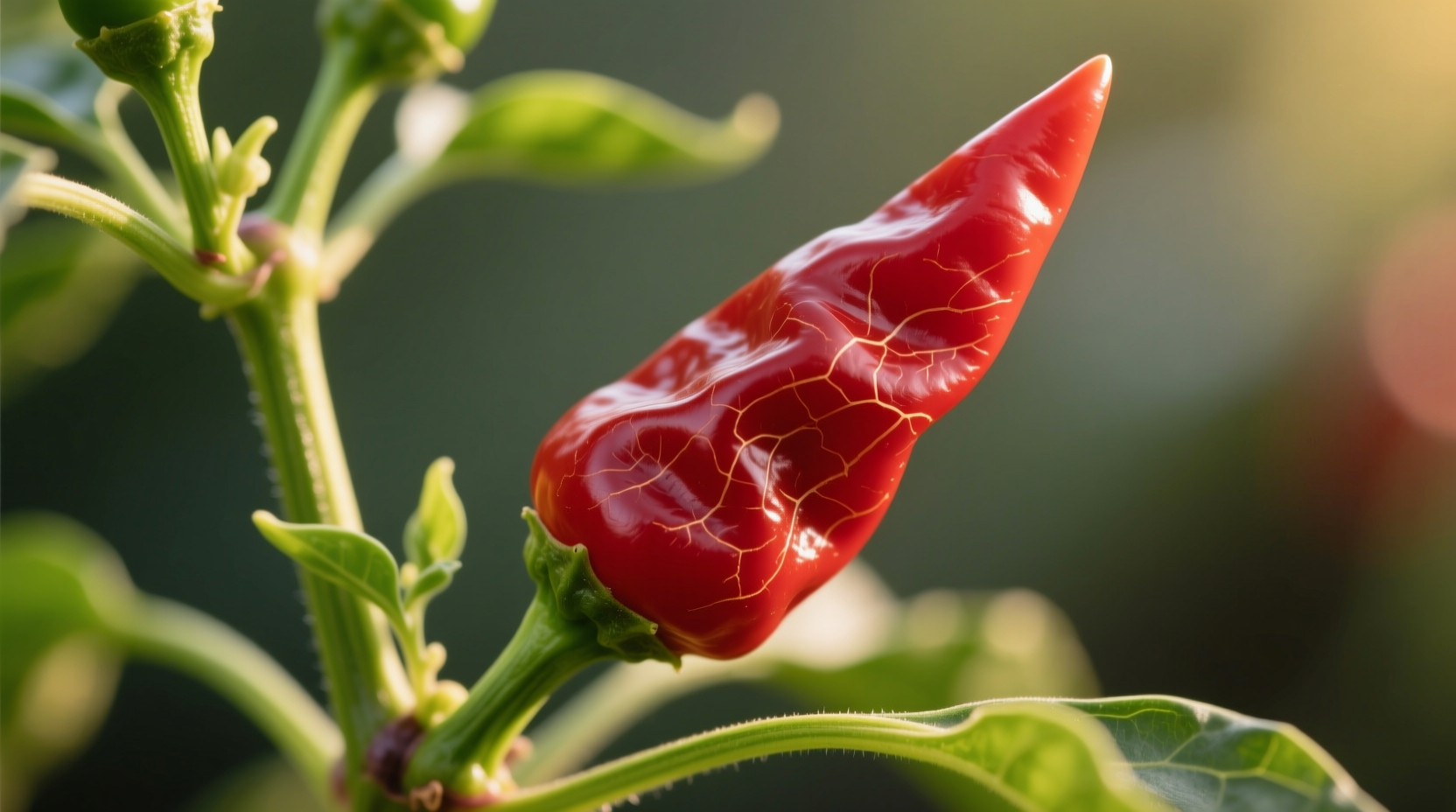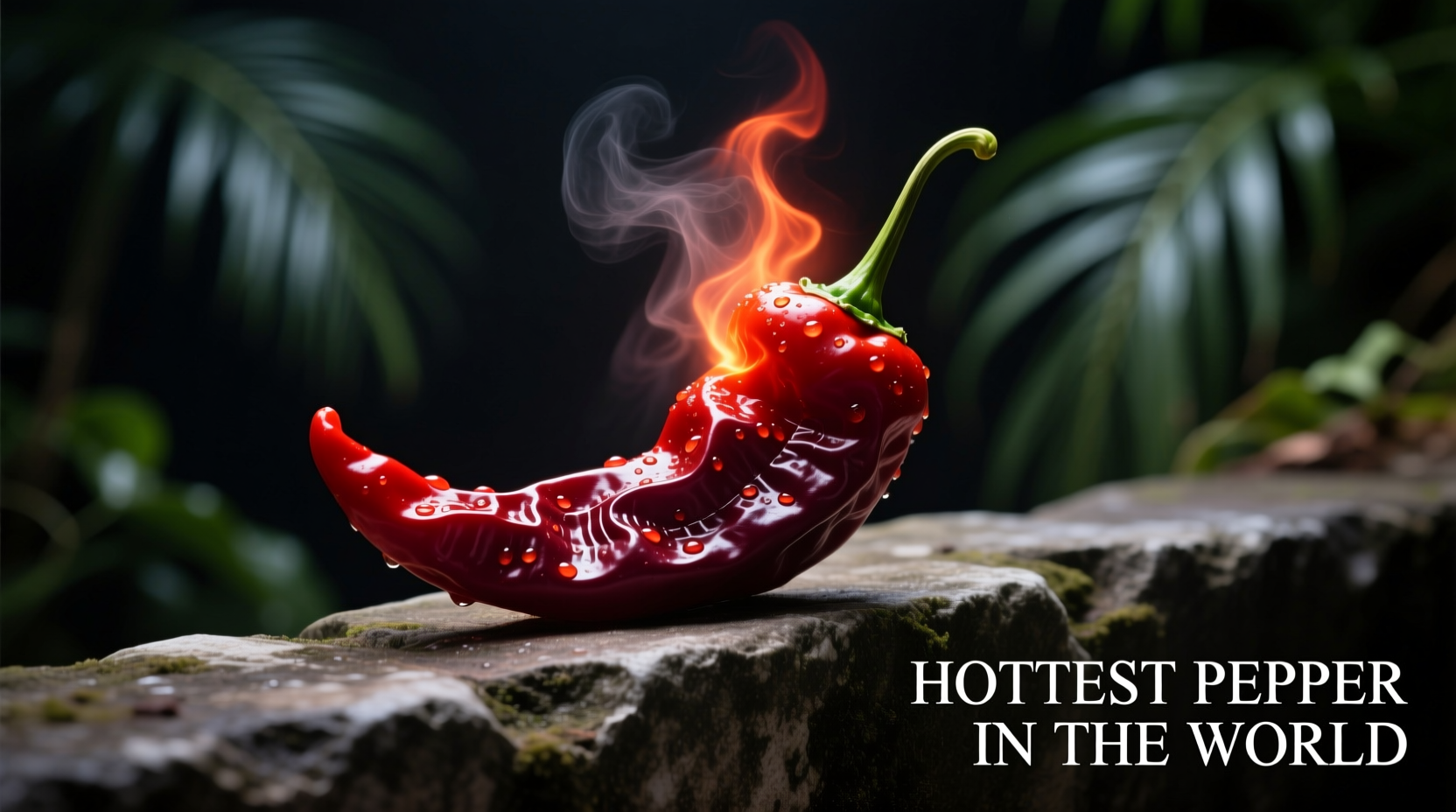For spice enthusiasts and culinary adventurers, understanding the world's hottest pepper isn't just about extreme heat—it's about appreciating the science, cultivation, and responsible handling of these remarkable botanical wonders. This definitive guide delivers verified facts from authoritative sources, practical safety information, and insights you won't find in superficial rankings.
Pepper X: The New Reigning Champion of Heat
Developed by Ed Currie of the PuckerButt Pepper Company over a decade of selective breeding, Pepper X represents the current pinnacle of chili pepper heat. Unlike viral internet claims about unverified "superhot" peppers, Pepper X's status comes with official documentation from Guinness World Records and laboratory verification from Winthrop University's research facility.
What makes Pepper X truly extraordinary isn't just its record-breaking heat measurement, but its complex flavor profile that includes notes of sweet fruitiness before the intense heat takes over. This characteristic makes it valuable to chefs who understand how to harness its power responsibly in specialty applications.
| Pepper Variety | Average SHU | Record Year | Creator |
|---|---|---|---|
| Pepper X | 2,693,000 | 2023 | Ed Currie (PuckerButt) |
| Carolina Reaper | 1,641,183 | 2013-2023 | Ed Currie (PuckerButt) |
| Trinidad Moruga Scorpion | 1,200,000 | 2012 | Original (Natural) |
| Naga Viper | 1,382,118 | 2010 | Gerald Fowler (UK) |
The Science Behind the Scoville Scale
Understanding how pepper heat is measured provides crucial context for these extraordinary numbers. The Scoville Organoleptic Test, developed in 1912 by pharmacist Wilbur Scoville, originally relied on human testers diluting pepper extract until the heat became undetectable. Today, High-Performance Liquid Chromatography (HPLC) provides precise, objective measurements of capsaicinoids—the compounds responsible for heat.
According to research published by the American Chemical Society, HPLC measurements are converted to Scoville Heat Units using the formula: SHU = 16.24 × capsaicin concentration (in parts per million). This scientific approach eliminates the subjectivity of earlier testing methods and provides the reliable data behind current records.
Evolution of Extreme Heat: A Historical Timeline
The pursuit of increasingly hot peppers represents decades of dedicated breeding work. This progression shows how scientific understanding and selective breeding have pushed boundaries:
- 1994: Red Savina Habanero certified at 577,000 SHU, holding the record for nearly a decade
- 2007: Bhut Jolokia (Ghost Pepper) verified at 1,041,427 SHU by New Mexico State University
- 2011: Trinidad Moruga Scorpion reaches 2,009,231 SHU in some specimens
- 2013: Carolina Reaper officially recognized by Guinness at 1,641,183 SHU
- 2023: Pepper X verified at 2,693,000 SHU, establishing a new benchmark
This progression documented by agricultural researchers at Winthrop University demonstrates how selective breeding has systematically increased capsaicin production while maintaining plant viability.
Physical Characteristics and Flavor Profile
Pepper X differs significantly from its predecessor in appearance and taste. While Carolina Reaper features distinctive bumpy texture and a red color when mature, Pepper X has a smoother, more tapered shape with vibrant red-orange coloring. The flavor journey begins with a surprising sweetness reminiscent of tropical fruits, followed by escalating heat that peaks dramatically.

Critical Safety Considerations
Handling peppers at this heat level requires serious precautions that many online challenges ignore. The National Institute for Occupational Safety and Health (NIOSH) recommends:
- Always wear nitrile gloves when handling superhot peppers
- Use protective eyewear to prevent accidental contact with eyes
- Work in well-ventilated areas to avoid inhaling capsaicin particles
- Have dairy products (milk, yogurt) readily available to neutralize heat
- Never use superhot peppers in open kitchens where airborne particles could affect others
Medical professionals at the American College of Emergency Physicians warn that improper handling of peppers exceeding 1,000,000 SHU can cause chemical burns, respiratory distress, and severe gastrointestinal reactions. The "One Chip Challenge" phenomenon has led to numerous emergency room visits, demonstrating why respect for these peppers' potency is essential.
Practical Applications Beyond the Heat Challenge
Despite their extreme heat, these peppers serve valuable culinary purposes when used correctly. Professional chefs utilize them in minute quantities to add depth and complexity to sauces, marinades, and specialty dishes. The key is understanding that a single drop of infused oil can transform an entire batch of sauce.
Pepper X's flavor complexity makes it particularly valuable for craft hot sauce producers. When properly diluted and balanced with complementary ingredients, it contributes not just heat but distinctive fruity notes that enhance rather than overwhelm dishes. Many award-winning hot sauces use these superhots as "secret ingredients" in trace amounts.
Growing Pepper X: Requirements and Challenges
Cultivating Pepper X requires specific conditions that explain its limited availability. These plants need:
- 120-150 day growing season with consistent temperatures
- Well-draining soil with balanced nutrients
- Approximately 70-80% humidity during fruiting
- Protection from extreme temperature fluctuations
- Specialized knowledge of capsaicinoid production triggers
According to agricultural specialists at New Mexico State University's Chile Pepper Institute, the heat level can vary significantly based on growing conditions, with stress factors like controlled water deprivation sometimes increasing capsaicin production.
Responsible Consumption Guidelines
If you're considering trying Pepper X or similar superhots, follow these evidence-based recommendations:
- Start with minuscule amounts—less than 1/16th of a pepper
- Always have dairy products available to neutralize capsaicin
- Never consume on an empty stomach
- Have water and antacids available as secondary options
- Consult with a physician if you have gastrointestinal conditions
- Avoid competitive eating challenges that encourage unsafe consumption
Remember that individual tolerance varies dramatically, and what might be manageable for one person could cause severe discomfort for another. The pursuit of extreme heat should never compromise personal safety.











 浙公网安备
33010002000092号
浙公网安备
33010002000092号 浙B2-20120091-4
浙B2-20120091-4